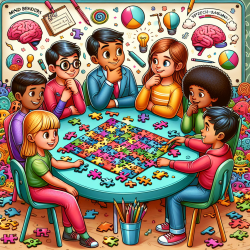Introduction
Understanding the unique challenges faced by justice-involved youth is crucial for creating effective interventions. The study titled "Exploring racial/ethnic differences in substance use: a preliminary theory-based investigation with juvenile justice-involved youth" provides invaluable insights into these challenges. This research highlights the overrepresentation of racial/ethnic minority youth in the juvenile justice system and the varying rates of substance use across different racial/ethnic groups. By examining these differences, we can better tailor our interventions to meet the specific needs of these youths.
Key Findings
The study reveals significant racial/ethnic disparities in the juvenile justice system. Minority youth are disproportionately represented, and Caucasian youth exhibit higher rates of substance use compared to their minority counterparts. These findings underscore the need for targeted interventions that address the unique risk factors and cultural contexts of different racial/ethnic groups.
Implications for Practitioners
Practitioners working with justice-involved youth can leverage these findings to enhance their intervention strategies. Here are some practical steps to consider:
- Understand Cultural Contexts: Recognize the cultural and social factors that influence substance use behaviors among different racial/ethnic groups.
- Tailor Interventions: Develop culturally appropriate intervention programs that address the specific needs and risk factors of each group.
- Focus on Prevention: Implement early intervention strategies to prevent substance use and justice involvement among at-risk youth.
- Engage Families and Communities: Involve families and community resources in the intervention process to provide a supportive environment for youth.
Encouraging Further Research
While this study provides a foundational understanding of racial/ethnic differences in substance use among justice-involved youth, further research is needed to explore the underlying causes and develop more effective intervention strategies. Practitioners are encouraged to engage in ongoing research and collaborate with academic institutions to continue building a robust evidence base.
Conclusion
By integrating the findings from this study into practice, we can create more effective and equitable interventions for justice-involved youth. Understanding and addressing the unique challenges faced by different racial/ethnic groups is essential for improving outcomes and reducing disparities in the juvenile justice system.
To read the original research paper, please follow this link: Exploring racial/ethnic differences in substance use: a preliminary theory-based investigation with juvenile justice-involved youth.










